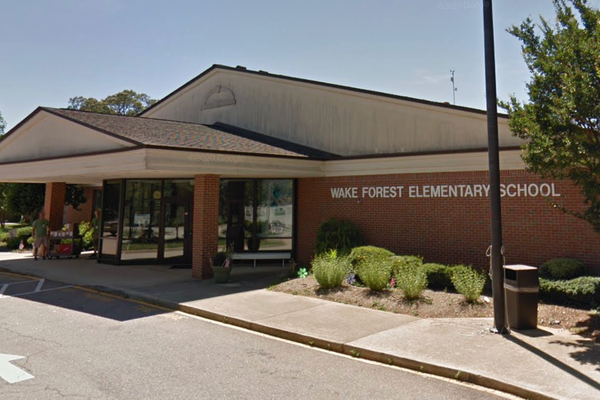
As we head into the second half of 2025, the British economy is showing signs of stabilization, but it remains a structurally sluggish environment. The UK managed to avoid a technical recession in 2024, and GDP is growing again.
Just barely.
Annualized growth is running in the 0.5% to 1% range, which is below trend and well behind both the U.S. and parts of Europe.
The Bank of England has been slower to pivot than the Fed, with policy rates still above 4%, and a bias toward caution given persistent services inflation.
Real wages have begun to rise after two years of erosion, but the improvement has not meaningfully lifted consumer sentiment. High housing costs, weak productivity, and a stubbornly large fiscal deficit continue to weigh on growth.
The labor market remains tight, although immigration and increased participation have helped moderate wage pressures.
The structure of the mortgage market is a key differentiator from the U.S. Most UK mortgages are either variable-rate or short-term fixed, so the impact of higher interest rates has been more immediate.
That has restrained consumer spending in a way we have not seen in the U.S., where long-dated fixed-rate mortgages offer households more protection.
Commercial real estate in London is holding up relatively well, supported by overseas capital and demand for legal and financial services office space.
Outside of the capital, the picture is less stable, especially in regional offices and retail. The housing market remains sluggish, with transaction volumes down and affordability stretched.
On the equity side, UK stocks are still cheap. The FTSE 100 and broader FTSE All-Share index trade at forward price-to-earnings ratios in the 9 to 11 times range.
Price-to-book ratios are often below 1.5. That compares to the S&P 500 at over 21x forward earnings and a price-to-book closer to 4.5.
Dividend yields on UK shares average between 4% and 4.5%, more than double the current yield on the S&P.
Part of this valuation gap is structural. The UK market is heavily skewed toward energy, materials, financials, and consumer staples. It lacks the high-growth tech concentration that dominates the U.S. index.
The result is that UK stocks often look like value traps to growth-focused global investors.
There is a case to be made for British equities from an income and contrarian value perspective. Private equity firms and sovereign wealth funds continue to quietly buy up UK assets, particularly in the mid-cap space where valuations are even more depressed.
There is a clear disconnect between public market pricing and private market interest.
The outlook is not without risk. The UK is headed into a general election, with polls suggesting a change in government.
Markets may welcome more fiscal discipline, but any shifts in tax or regulatory policy could inject uncertainty.
Absent a stronger domestic growth story or a revival in innovation-led sectors, the valuation discount to U.S. stocks is likely to persist according to the experts.
Fortunately I thrive on ignoring the market and economics experts.
British equities offer a very different proposition from U.S. large caps.
Less growth, more income. Less enthusiasm, more defensiveness.
Sounds Perfect.
As the grandchild of Irish Immigrants, I am probably not supposed to recommend anything British but safe and cheap is too good to pass up no matter its nationality, accent or tendency to overcook perfectly good food.
Here are four UK-rooted names I am keeping a close eye on, each with its own catalyst and story.
CNH Industrial (Ticker: CNH) remains a global force in the agricultural and construction equipment space. Best known for brands like Case IH and New Holland, CNH has emerged from its restructuring with a leaner focus and a sharper edge. Following the spin-off of its truck and powertrain business into Iveco, CNH is doubling down on precision agriculture and automation. Yes, farm equipment demand has softened a bit, but CNH trades at just under 8x forward earnings and around 90% of book value. These are levels that already reflect a lot of caution.
In the meantime, the dividend yield sits near 3.1%, and the company continues to reinvest for long-term growth in smart farming and electrified machinery. For patient investors, the reward-to-risk balance looks favorable.
Nomad Foods (Ticker: NOMD) offers another quietly consistent story. As the parent of Birds Eye, Iglo, and Findus, Nomad is a dominant player in the European frozen food space. Frozen food may not sound exciting, but the business is sticky, recession-resistant, and generates a ton of cash.
Nomad's leadership team, which includes veteran operators and dealmakers, has done a solid job of balancing margin expansion with bolt-on M&A. The stock trades at less than 10x forward earnings and carries a free cash flow yield of around 10%. There's no dividend here, but management has been actively repurchasing shares.
For investors looking for dependable cash flow at a discount, this one fits the bill.
Pearson (Ticker: PSO) is a classic example of a UK firm reinventing itself. Once known for textbooks and standardized tests, Pearson has transformed into a digital education company. The company now focuses on online learning, virtual testing, and credentialing services, with a strong push into direct-to-consumer platforms.
While the pivot has not been without bumps, the underlying fundamentals have improved. Pearson trades around 12x earnings and yields about 2.3%, with a modest payout ratio that leaves room for growth.
As global demand for online education and upskilling continues to grow, Pearson looks increasingly well-positioned to capitalize on this long-term shift.
Cushman & Wakefield (Ticker: CWK), while operationally headquartered in Chicago, is technically domiciled in London and still reflects UK corporate governance roots. It is one of the largest commercial real estate services firms in the world, competing with CBRE and JLL. CWK has been through the wringer with the broader office market, but its facilities and outsourcing segments remain solid.
The real story here is valuation.
Shares are trading at just 8x forward earnings, a level that discounts a lot of bad news. The company has been paying down debt and preserving cash. In a world where deep value is hard to come by, CWK stands out as a name with real asset exposure, global scale, and the potential for mean reversion once commercial real estate stabilizes.
All four companies reflect the type of disciplined, cash-generating businesses that do not always get the headlines but often reward patient investors.
US Investors are focusing on deciding which news to ignore while chasing high multiple stocks.
Across the pond we can find some quality companies at bargain prices worthy of attention from patient aggressive investors
Whether it is agriculture, frozen foods, education, or real estate, these companies offer a chance to diversify geographically without leaving the comfort of U.S. markets.







